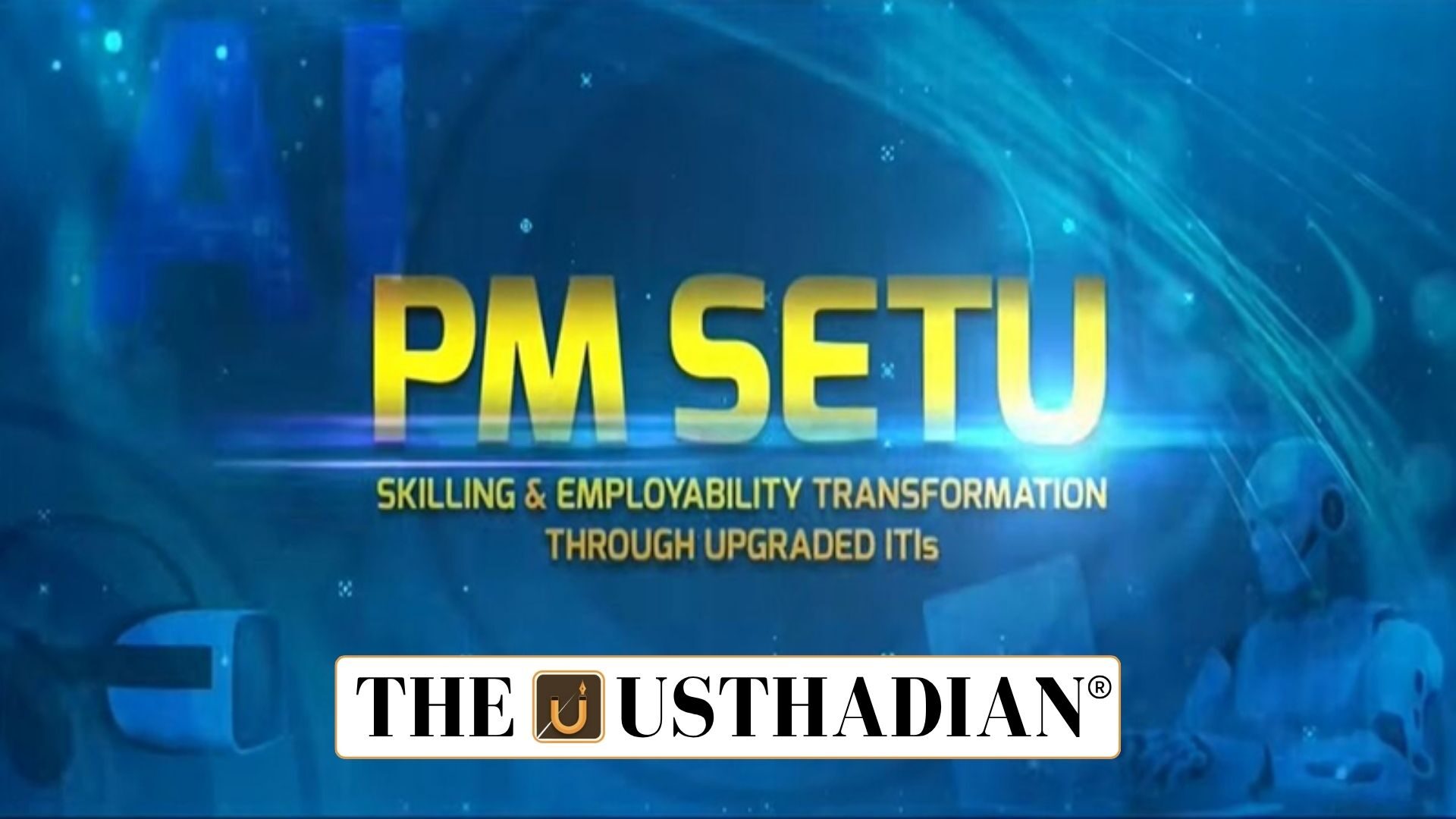Introduction
PM SETU for transforming ITIs in India: The Prime Minister has launched the PM-SETU (Pradhan Mantri Skilling and Employability Transformation through Upgraded ITIs). It is a landmark initiative to modernize vocational education and link skills with employability. The scheme will be implemented under the Ministry of Skill Development and Entrepreneurship.
Features of PM SETU
PM-SETU is a centrally sponsored scheme with an outlay of ₹60,000 crore. It aims to transform 1,000 Government Industrial Training Institutes (ITIs) into industry-aligned, modern training centres. This marks a major investment in strengthening India’s skilling ecosystem.
The scheme will follow a hub and spoke model, where 200 hub ITIs will be linked to 800 spoke ITIs. The hubs will have innovation centres, production units, advanced infrastructure, and placement facilities. The spokes will act as outreach centres to expand access.
Static GK fact: The hub-and-spoke model is widely used in logistics, aviation, and skill development systems for efficient resource allocation.
Role of Industry Partners
Each cluster will be managed through Special Purpose Vehicles (SPVs) with credible Anchor Industry Partners. This partnership ensures outcome-based training, alignment with industry needs, and better job placements.
The scheme will also create multiple pathways such as long-term diplomas, short-term certifications, and executive programs. This diversification will meet the needs of students, working professionals, and industry requirements.
Strengthening National Skill Training Institutes
The government will strengthen five National Skill Training Institutes (NSTIs) at Bhubaneswar, Chennai, Hyderabad, Kanpur, and Ludhiana. These institutes will be developed as Centres of Excellence with global partnerships. They will focus on cutting-edge skill training and international collaborations.
Static GK Tip: The NSTIs function as apex training centres for trainers under the Directorate General of Training (DGT).
About ITIs in India
Industrial Training Institutes (ITIs) have been the backbone of Vocational Education and Training (VET) since the 1950s. They function under state governments but are accredited by the Directorate General of Training (DGT) under the Ministry of Skill Development and Entrepreneurship.
Currently, India has 15,034 ITIs, out of which nearly 78% are privately owned. Despite this vast network, quality and industry alignment remain challenges. PM-SETU is expected to bridge this gap by bringing advanced training standards.
Related Schemes
India has earlier launched schemes such as STRIVE (Skills Strengthening for Industrial Value Enhancement), Model ITI, and ESDI (Enhancing Skill Development Infrastructure in North Eastern States). Together with PM-SETU, these initiatives represent a holistic effort to prepare India’s workforce for the future.
Static GK fact: India’s first ITIs were established in 1950 under the Craftsmen Training Scheme.
Conclusion
PM-SETU is a major step towards making India a global skills hub. By upgrading ITIs, partnering with industries, and strengthening trainer institutes, the scheme aims to improve both employability and productivity of India’s youth workforce.
Static Usthadian Current Affairs Table
PM SETU for transforming ITIs in India:
| Topic | Detail |
| Full form of PM-SETU | Pradhan Mantri Skilling and Employability Transformation through Upgraded ITIs |
| Ministry | Ministry of Skill Development and Entrepreneurship |
| Scheme type | ₹60,000 crore centrally sponsored scheme |
| Coverage | 1,000 Government ITIs |
| Hub and spoke model | 200 hub ITIs linked to 800 spoke ITIs |
| Key components | Innovation centres, incubation, production units, training of trainers |
| Industry role | SPVs with anchor industry partners |
| Strengthened NSTIs | Bhubaneswar, Chennai, Hyderabad, Kanpur, Ludhiana |
| Total ITIs in India | Around 15,034 (78% private) |
| Related schemes | STRIVE, Model ITI, ESDI |








